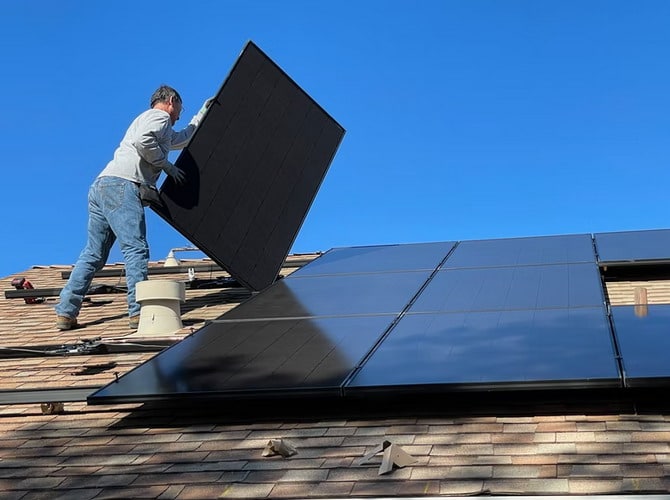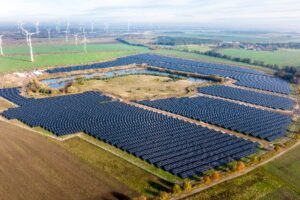How to Use Active and Passive Solar Technology

Nowadays, society is no stranger to renewable energy and has found enough reason to make the switch from fossil fuels. One of those reasons is the current hyper-inflation and the rapid rise in the cost of fossil fuels.
When fossil fuels are at $100 a barrel while the five-year average is a mere $60, it becomes reason enough to switch over, even if high costs are the sole reason.
Solar panels, for example, utilize the sun’s unlimited and free energy and are also environmentally friendly. Although the cost of installation prevented many households and businesses from switching over, it’s become a non-issue with the rapidly declining costs in recent years.
Whether you’re installing it to power your home or to save costs for your business, you’ll find everything you need to know about the two types of solar energy systems — passive and active. You may also be surprised to learn that your house might be using a form of passive solar energy already!

Solar water heater installed on the roof.
Using Passive Solar Energy
If you ask a hundred random people what solar energy is, they’d likely respond by describing solar panels. This is likely due to the increasing number of neighborhoods lined with solar panels.
And while that’s certainly one kind that uses a few types of solar cells, there are others. These include active solar water heaters, space heating and passive systems, to name a few.
However, unlike active systems, the passive variety doesn’t involve a single mechanical device. Instead, it uses windows, skylights, natural shading and insulation.
Passive solar energy systems are dependent on the building’s orientation and the thermal mass of its walls to absorb excess heat.

Passive homes use large south-facing windows to capture solar energy.
Passive Solar Energy Pros
The most apparent advantage of using a passive solar energy system is that you don’t need any external equipment. The external equipment includes items such as batteries, panels and other items that contribute to the solar panel cost.
Although passive systems don’t use external equipment, it’s still been shown to decrease energy costs by almost 14 percent. It’s also known to be a lower risk for your health because it doesn’t use radiators or furnaces that may contribute to existing allergies.
Generally, most passive systems use large south-facing windows to capture solar energy. The system uses the law of thermodynamics to transfer heat from warm to cool surfaces, the easiest method being convection.
Passive Solar Energy Cons
Although the lack of equipment may make passive systems more budget-friendly, there are a few cons to consider. The first is that the effectiveness of these systems largely depends on the weather.
It’s generally best for places with modest weather and best avoided by those in places prone to high temperatures. This is because passive systems have the potential to overheat your living space. Another disadvantage is that you must carefully select the windows. If you choose the wrong one, it can drastically reduce the system’s effectiveness.

Solar panels can reduce the carbon footprint of your building.
Using Active Solar Energy
Most solar energy systems you see today are active rather than passive. These systems include photovoltaic solar panels and even heating and cooling systems.
Active solar energy systems use external sources such as pumps, PV cells and blowers to capture, convert and store free solar energy. Depending on the design, active systems can be used to provide heat/cooling for a single home or to power an entire community.
Active Solar Energy Pros
The most significant advantage of active solar energy systems is that they only need the sun and don’t release harmful carbon dioxide. Out of all the active systems, the most popular are the flat PV panels you see mounted to rooftops or the mobile versions used at campsites.
Panels are the most popular for several reasons. They only require minimal maintenance, they generate zero wind noise and they keep clean even through rough weather.
Active systems are also better than passive ones because you can use the captured energy for more than temperature control.

Solar PV panels can lower your energy bill.
Active Solar Energy Cons
In the past, the main argument against active solar panel systems, for many, were the high installation costs. Fortunately, future solar panel system owners will be happy to hear that the costs have fallen dramatically.
It’s not only the tax incentives that help reduce costs but also the increased demand. This allowed manufacturers to produce higher quality panels and a reduced cost.
One disadvantage is that the Federal Tax Incentive is about to expire — unless, of course, Congress decides to renew before the expiration date.
Although these systems only require minimal maintenance, such as brushing off dead leaves, if they do malfunction, they can be costly to repair. Fortunately, you can mitigate this risk by selecting an active solar energy system that comes with a warranty.
Using Passive and Active Solar Technology
Making the switch to renewable energy is a significant life choice, and it pays to ensure you’re making the right one. The solar industry is constantly adapting and improving to provide consumers with only the very best technology.
Passive solar energy is typically much cheaper than active systems. However, it’s highly dependent on the weather and comes with the risk of overheating a building.
Active solar energy, like solar panels, only requires the sun and a few external devices, which are low maintenance and dependable. For most homeowners and businesses, active solar is the way to go because you can use the captured energy for more than temperature regulation.




